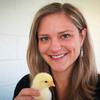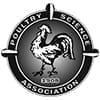Explore all the information on
Poultry biosecurity
Biosecurity is a key management tool and an essential part of any successful poultry production system: it can be defined as the planning and implementation of a set of measures to protect domestic poultry flocks against the introduction of unwanted organisms. Because of the concentration in size and location of poultry flocks in current commercial production operations and the inherent disease risks associated with this type of production, it is imperative that poultry producers practice daily biosecurity measures. Developing and practicing daily biosecurity procedures as best management practices on poultry farms will reduce the possibility of introducing infectious diseases such as Avian Influenza and Exotic Newcastle as well as many others. Contract poultry growers should be familiar with the specifics of their company’s biosecurity protocols and work closely with company representatives to implement those programs.
In this Engormix interview, Ricardo Santin (International Poultry Council President) talks about the 2024 Annual Meeting that took place in Buenos Aires, and highlights important discussions on Avian Influenza, regulations and biosecurity, among other subjects....
Comments : 0
Recommendations: 0
The hatching phase of broiler production refers to the last three days of incubation, which are embryonic days 18-21. This phase of embryonic development is critical for the chick’s survival, as well as welfare and production later in life. In commercial hatcheries, eggs with viable embryos are transferred from incubators to...
Comments : 0
Recommendations: 0
.jpg&w=3840&q=75)

On cherche des distributeurs dans plusieurs pays d’Afrique comme le Kenya, l’Ethiopie, la Tanzanie, le Congo, etc
Suggested link
Introduction Nepal’s poultry industry has seen a significant and rapid growth in the last decade, contributing more than 4% to the national gross domestic product (GDP) [1, 2]. Majority of the poultry products are supplied by numerous commercial farms (54% of total poultry production) scattered throughout the country. Backyard poultry also accounts for significant proportion of the total poultry production (46%); poultry meat and eggs are an easy source for protein and...
Comments : 0
Recommendations: 1
Martha Pulido-Landínez (Mississippi State University) comments on two Enterococcus studies presented at the IPSF, and offers practical recommendations regarding this issue, in this Engormix interview during IPPE 2024 in Atlanta, USA....
Comments : 1
Recommendations: 1
I. INTRODUCTION Determination of range usage by hens can be difficult for researchers and free-range egg farmers, particularly usage on the outer sections of the range (i.e., > 50 m from the hen shed). Live counts only give a snapshot of numbers of hens on the range at a defined time point and do not show the frequency of range usage. Camera traps, also referred to as trail cameras and wildlife cameras, are relatively cheap and useful tools that could produce valuable information...
Comments : 0
Recommendations: 0
INTRODUCTION Global population growth, along with rising affluence in Asia, are driving up not only our total demand for food, but also the amount of protein required to feed all of humanity (1, 2). More specifically, the world’s population is expected to grow to over 9 billion people by 2050, and demand for poultry, which represents a relatively healthy and efficient source of protein, is likely to be double from what it was in 2005. At the same time, it is expected that...
Comments : 0
Recommendations: 0
Bio-security is the cheapest, most effective means of disease prevention and control available. Proper bio-security will help to ensure the overall health and welfare of your flock. ...
Comments : 0
Recommendations: 0
Ben Dellaert (Secretary General, AVINED / International Egg Commission), comments on the position of the IEC regarding avian influenza vaccination and the worldwide efforts to control the disease, during Avicola Porcinos 2023 in Buenos Aires, Argentina....
Comments : 0
Recommendations: 0
Marcela Uhart (Director, Latin America Program, UC Davis One Health Institute) comments on virus reassortments, the role of migratory species, as well as possible measures, during Avicola Porcinos 2023 in Buenos Aires, Argentina....
Comments : 0
Recommendations: 0
Christophe Cazaban (Poultry Scientific Director, Ceva Animal Health) speaks on the different vaccines available on the market to fight this disease, as well as the benefits and limitations of known and new technologies, during Avicola Porcinos 2023 in Buenos Aires, Argentina....
Comments : 0
Recommendations: 0
The Center of Excellence for Poultry Science at the University of Arkansas is proud to present the first International Avian Influenza Summit. The hybrid event will be hosted in Fayetteville, Arkansas, USA on October 16-17, 2023.
The International Avian Influenza Summit is a...
Comments : 0
Recommendations: 0
The first International Avian Influenza Summit will be a hybrid event hosted in Fayetteville, Arkansas, USA on October 16-17, 2023.
Meet some of the speakers that will appear in this event:
Alberto Torres,...
Comments : 9
Recommendations: 0
In this episode of Let's Squawk About It, Chanelle Taylor (Cargill Canada) talks to Sam Shafer (PSA) about migratory birds, biosecurity measures to take, and what we have learned in the past year from Highly Pathogenic Avian Influenza (HPAI)....
Comments : 3
Recommendations: 1
The Center of Excellence for Poultry Science at the University of Arkansas is proud to present the first International Avian Influenza Summit. The hybrid event will be hosted in Fayetteville, Arkansas, USA on October 16-17, 2023.
The International Avian Influenza Summit is a global gathering of experts, scientists, policymakers, and stakeholders dedicated to addressing the challenges posed by Highly Pathogenic Avian Influenza (HPAI) epizootic. The summit aims to foster collaboration,...
Comments : 0
Recommendations: 1
1 | INTRODUCTION Water is the source of life on the earth and it seems that without water, life is inconceivable. Unlike humans, who can produce and retrieve the necessities of life by increasing their knowledge, birds rely more on the water in nature, and unfortunately, any changes affecting the quantity and quality of water in geographical areas of the world including Urmia Lake, affects the lives of birds. The ecological level of the Urmia lake water is 1274.10 m/12.546 Bm3...
Comments : 0
Recommendations: 0
Introduction Nepal’s poultry industry has seen a significant and rapid growth in the last decade, contributing more than 4% to the national gross domestic product (GDP) [1,2]. Majority of the poultry products are supplied by numerous commercial farms (54% of total poultry production) scattered throughout the country. Backyard poultry also accounts for significant proportion of the total poultry production (46%); poultry meat and eggs are an easy source for protein and...
Comments : 0
Recommendations: 1
The commercial poultry industry is concerned about the continued spread of Avian Influenza (AI) and is closely watching as this disease is found in more countries around the world. Almost daily we receive reports that there are more outbreaks here or there in different media. We see these reports in digital newspapers, television, radio, and this time we are bombarded with more ads on WhatsApp, Twitter, Facebook, TikTok, Instagram, Telegram, etc. In many cases, we do not know the source of...
Comments : 1
Recommendations: 3
.jpg&w=3840&q=75)

On cherche des distributeurs dans plusieurs pays d’Afrique comme le Kenya, l’Ethiopie, la Tanzanie, le Congo, etc
Suggested link
Vijay Durairaj (Huvepharma) explains the severity of this disease, and comments on diagnosis and prevention best practices, in this interview during IPPE 2023 in Atlanta, USA....
Comments : 0
Recommendations: 1
A highly pathogenic strain of Avian Influenza (sometimes called bird flu) is currently spreading across the United States. The virus has been detected in six States since January 2022 (see Figure 1). Avian influenza: about the...
Comments : 0
Recommendations: 0












.jpg&w=3840&q=75)
















.jpg&w=3840&q=75)






